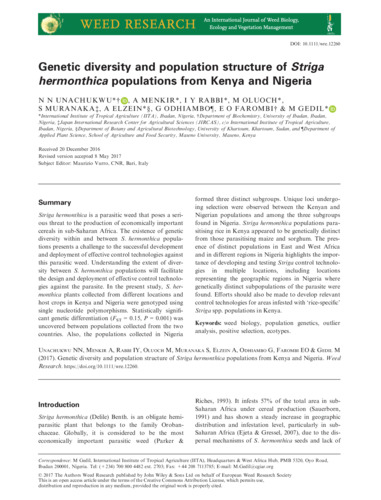Genetic diversity and population structure of Striga hermonthica populations from Kenya and Nigeria
Abstract
Striga hermonthica is a parasitic weed that poses a serious threat to the production of economically important cereals in sub-Saharan Africa. The existence of genetic diversity within and between S. hermonthica populations presents a challenge to the successful development and deployment of effective control technologies against this parasitic weed. Understanding the extent of diversity between S. hermonthica populations will facilitate the design and deployment of effective control technologies against the parasite. In the present study, S. hermonthica plants collected from different locations and host crops in Kenya and Nigeria were genotyped using single nucleotide polymorphisms. Statistically significant genetic differentiation (FST = 0.15, P = 0.001) was uncovered between populations collected from the two countries. Also, the populations collected in Nigeria formed three distinct subgroups. Unique loci undergoing selection were observed between the Kenyan and Nigerian populations and among the three subgroups found in Nigeria. Striga hermonthica populations parasitising rice in Kenya appeared to be genetically distinct from those parasitising maize and sorghum. The presence of distinct populations in East and West Africa and in different regions in Nigeria highlights the importance of developing and testing Striga control technologies in multiple locations, including locations representing the geographic regions in Nigeria where genetically distinct subpopulations of the parasite were found. Efforts should also be made to develop relevant control technologies for areas infested with ‘rice-specific’ Striga spp. populations in Kenya.

